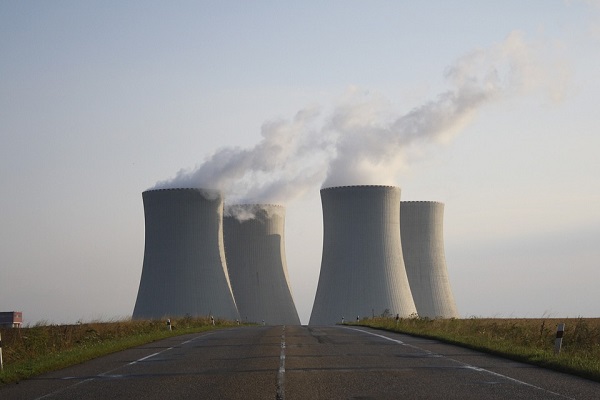
–>
June 19, 2022
Outside the United States, nuclear is entering a golden era, especially in China. There is a record building boom in current and announced plants, including more than 225 plants in China alone. Costs are being driven down to exceptionally affordable levels. Best practice current nuclear plants deliver costs of $0.05/kwh versus the average U.S. electric bill of $0.14/kwh. Most impressively, technology is rapidly evolving to safe, low-waste fourth-generation technology, or GEN IV, expected to be commercialized by 2030.
‘); googletag.cmd.push(function () { googletag.display(‘div-gpt-ad-1609268089992-0’); }); }
According to the U.S. Department of Energy, GEN IV high-temperature, low-pressure plants “offer impressive safety features and can be easy to construct and affordable to maintain.” High temperature means GEN IV nuclear plants can generate electricity, which accounts for some 20% of world energy demand, and, for the first time, replace fossil fuels in process industries that rely on heat.
This opens a new world to nuclear and will, according to the U.S. Department of Energy, in addition to all-important electric generation, power “hydrogen production, desalination, district heating, petroleum refining and ammonia production.” As process energy is the second largest source of energy, powered by fossil fuels, the coming dual electric and process heat output of GEN IV nuclear is of huge significance.
Despite all this positive, yet virtually unreported news, nuclear energy in the U.S. has in essence been abandoned, with two exceptions. Utility operators working through supplemental license renewals (SLRs) are seeking to extend the useful lives of the existing nuclear fleet, but this is a mere stopgap effort and now subject to a freeze by the Nuclear Regulatory Commission. Prospectively, tech entrepreneurs, supported by generous Department of Energy subsidies, aim to commercialize experimental reactors scaled down to small size, known as small modular reactors or SMRs.
‘); googletag.cmd.push(function () { googletag.display(‘div-gpt-ad-1609270365559-0’); }); }
The resulting outlook for nuclear is brutal. In the past twenty-five years, the U.S. has put exactly two plants in service (Watts Bar 2 in Tennessee and Vogtle [2022] in Georgia), and no new plants are slated to be constructed, excluding two demonstration SMRs. On present course due to retirements, nuclear power generation in the U.S. is expected to decline by 40% in 2050, from 20% of electric generation to 12%, according to the U.S. Energy Information Administration.
Are SMRs the Answer?
The concept animating SMRs is quite simple. Break down nuclear technology into bite-sized 60-MW components that can be strung together as needed. Absolute cost per module is low, reducing sticker shock for utilities. Delivery of small units can be made using conventional truck and rail. Sites can be located on small plots, including existing brownfield former coal plants. Add innovation in design and safety and firms led by pioneering entrepreneurs, such as Bill Gates’s TerraForm Power, and you have the ostensible blueprint for an exciting new nuclear future.
The reality of SMRs to date can be summarized as over-hyped and under-delivered. Developed as a concept in the 1990s, thirty-years later, there is yet to be a working commercial unit, with the soonest one now promised for 2027. Of the two demonstration plants in the U.S., NuScale in Utah and TerraForm in Wyoming, NuScale has to date received the most funding, including a recent life-saving $1.4-billion grant from the U.S. Department of Energy, following a long series of delays and cost overruns.
Cost estimates for the 720-MW plant (i.e., twelve 60-unit modules) now total $6.1 billion and counting. At a per-unit cost of more than $8,000/mwh, the NuScale plant is uncompetitive but argued as forgivable for a first-of-its-kind operation. While NuScale claims that it will ultimately deliver sustainable costs, critics allege that SMR construction costs and cost per kilowatt-hour will miss forecasts by a wide margin.
Over the years, SMRs, and the NuScale project in particular, have developed a loyal following and devoted enemies. Most prominent among the supporters, SMRs are the poster child of the Biden administration, as articulated by U.S. Secretary of Energy Jennifer Granholm, “[W]e are very bullish on these advanced nuclear reactors.” The enthusiasm has spread to the broader press.
‘); googletag.cmd.push(function () { googletag.display(‘div-gpt-ad-1609268078422-0’); }); } if (publir_show_ads) { document.write(“
Among the vocal opponents of SMRs are “the renewables,” for whom any nuclear future, small, medium, or large, is a threat. Leading the attack is the self-titled Institute for Energy Economics and Financial Analysis (IEEFA), who criticize SMRs as “too late, too expensive, too risky and too uncertain.” For these advocacy groups, it is all renewables, all the time.
As for the actual customers, the major U.S. utilities, support for SMRs is publicly advocated but distinctly muted. The reality of SMR is best judged by the fact that, thirty years in, there are zero new commitments to an SMR commercial plant by any U.S. utility. Rather, SMRs are billed as a possible alternative, among many, including solar, wind, carbon capture, and renewable natural gas — and, most pointedly, fourth-generation large-scale nuclear designs, which rely on molten salts, gases, liquid metals, and other high-temperature coolants instead of current light and heavy water.
It all comes down to scale. Small is good marketing for a risk-averse world. It sounds comforting. But nothing can change the fact that our national interest in electric generation is large, especially if it must double to support the electrification of transportation, as argued by Elon Musk.
If we are serious as a nation about producing massive clean energy — and we are not — it is unlikely that it will be cheaper to build thousands of 60-MW modular units instead of hundreds of next-generation single vessel, safe, low-cost, low-waste reactors. Economy of scale does not mean economy of small scale. In reality, SMRs in the U.S. are being positioned as an incremental technology to the main solution of solar and wind, at the expense of large-scale nuclear. The correct policy answer is to pursue large-scale and SMRs.
The irony is that even the promise of SMR loses to present-day large-scale nuclear best practices. South Korea and China are presently building large-scale nuclear plants for $2,500/mwh to $4,000/mwh versus an entirely unproven cost claim for SMRs of $4,300/mwh. Likewise with levelized energy costs of $0.05/kwh for a 1.4-GW nuclear plant, already achieved and capable of being reduced at scale production, versus $0.058/kwh promised for the development-phase NuScale Utah plant at half the size. U.S. energy policy rejects the one proven, low-cost, readily available nuclear solution, with an outstanding technology roadmap ahead.
If nothing else moves us as a nation, the massive Chinese nuclear building program — 228 announced new plants — ought to be the decisive wake-up call to start rolling on large-scale nuclear in the United States. China plans to ride to world dominance on the back on clean nuclear and dirty coal. In the U.S., nuclear on the scale required will never happen and, worse still, is planned never to happen. Instead, we get the unworkable promotion of solar and wind, with a side glance at SMRs. And, unlike China, we do not have coal as a politically viable base fuel.
In a mere thirty years, we will pass from the world’s nuclear leader to nuclear irrelevancy. We are going to pay for this one-way bet on so-called renewables, good and hard.

Image via Pixabay.
<!– if(page_width_onload <= 479) { document.write("
“); googletag.cmd.push(function() { googletag.display(‘div-gpt-ad-1345489840937-4’); }); } –> If you experience technical problems, please write to [email protected]
FOLLOW US ON
<!–
–>
<!– _qoptions={ qacct:”p-9bKF-NgTuSFM6″ }; ![]() –> <!—-> <!– var addthis_share = { email_template: “new_template” } –>
–> <!—-> <!– var addthis_share = { email_template: “new_template” } –>






